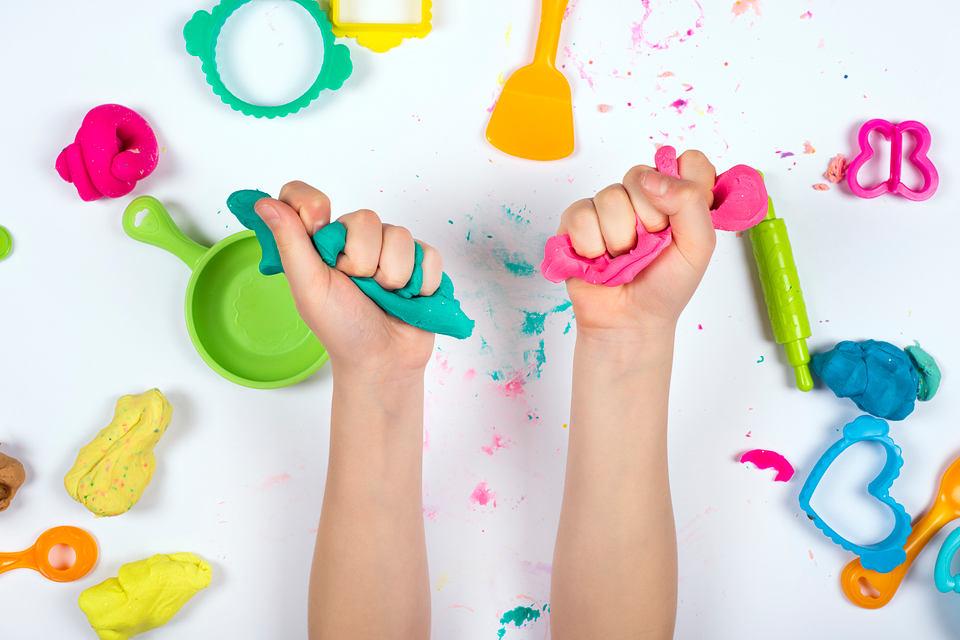Love the idea of making playdough but hate that when you try a homemade playdough recipe and then it is too sticky. I tried hundreds of recipes and finally figured out how you can fix any type of homemade playdough recipe and make it less sticky!
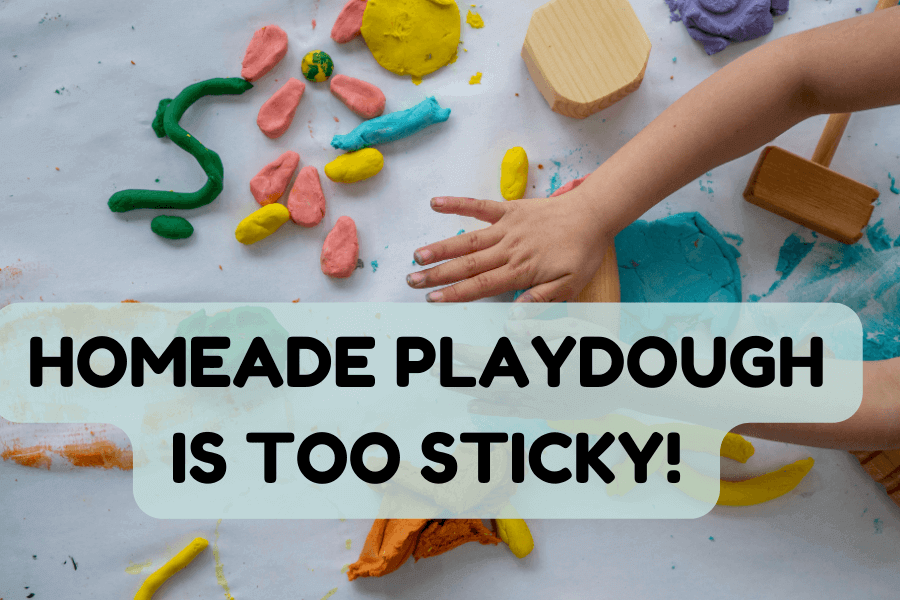
Playdough is one of the best ways to keep your child happy and engaged. Homemade playdough is less toxic than store-bought playdough and the texture is softer, making it easier for toddlers or kids to manipulate.
Follow this post and learn how to fix when homemade playdough is too sticky
The short answer is:
When playdough is too sticky it means it has too much moisture – meaning it has too much water or oil. Quick fix – Add more flour and continue to knead until all the moisture is absorbed.
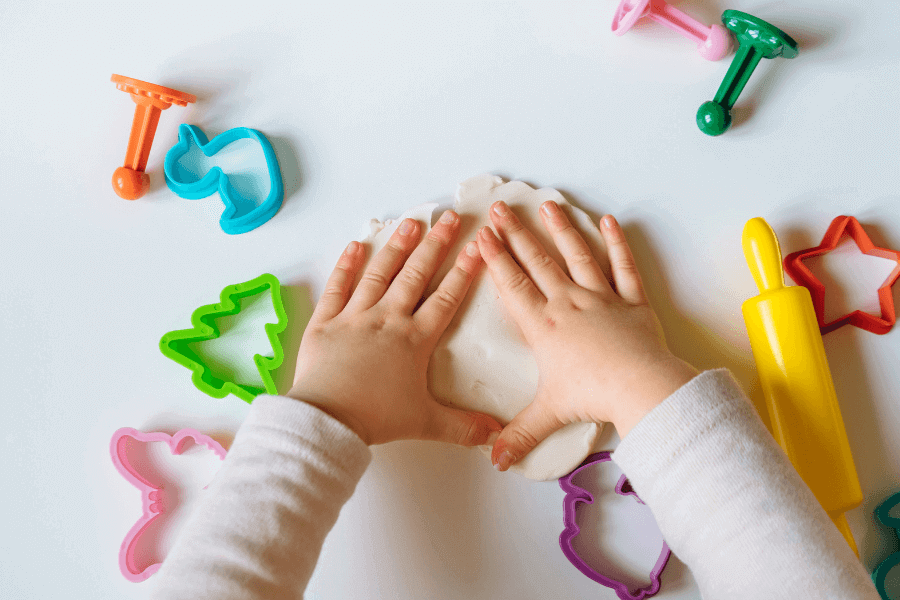
Why is my Homemade Playdough too Sticky?
When making homemade playdough is hard to measure the exact ingredients – especially when measuring flour. This means that we can add too much or too little water.
Here are the most common explanations for why your homemade playdough is too sticky
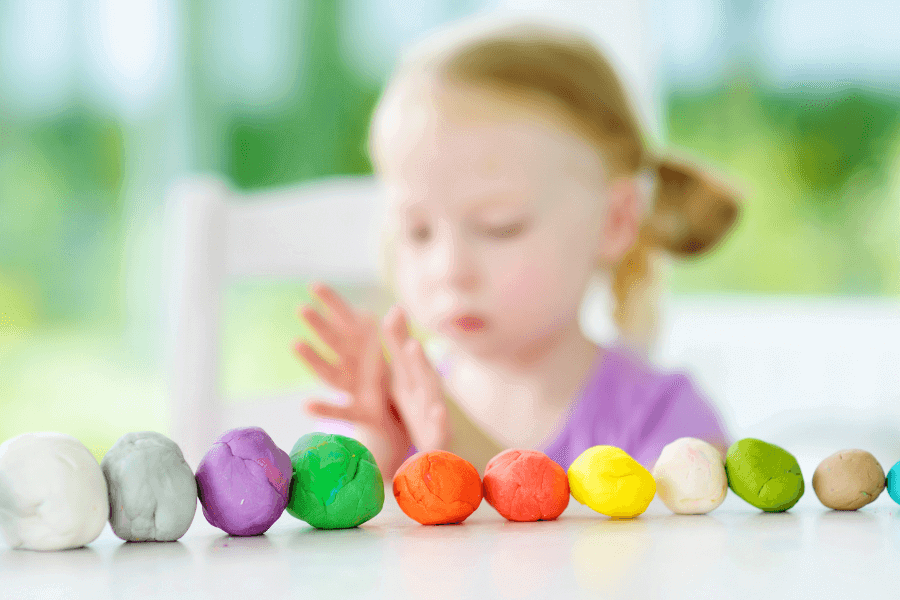
1. Less Proportion Of Flour Can Make Your Playdough Sticky
One of the primary reasons why your playdough is too sticky is because it has too much moisture, usually an inadequate amount of flour. As mentioned earlier, flour forms the base of your playdough. It is an essential binding factor for all the ingredients you have used. So, if the amount of flour is insufficient, the binding is affected, and therefore, your playdough will be loose.
Solution: You can make it less sticky by adding more flour accordingly.
Inadequate Salt Can Increase Moisture Content
tent is inadequate in your homemade playdough, there’s an increase in the moisture content. Increased moisture content can make your play dough too sticky and reduce the overall firmness.
More salt in your Playdough will result in a firmer texture and therefore less moisture.
Solution: Adding more salt can help reduce the extra moisture.
Less Flour could result in sticky playdough
Flour is the binding element, but heat is required to activate the process of binding. If you haven’t cooked the playdough properly, there are chances that it might turn out sticky due to loose ingredients and increased moisture.
Solution: Cooking your playdough for an extra 2 to 3 minutes can increase the overall binding and remove the extra stickiness.
If your recipe doesn’t call for cooked Playdough, adding 1 ya spoon of flour at a time and kneading it could help absorb the extra moisture. This is my favorite method for fixing sticky Playdough
These three factors are the reason why your homemade playdough is too sticky. Just follow all the solutions, and your playdough will turn out to be excellent.
Why is my Homemade Playdough too dry?
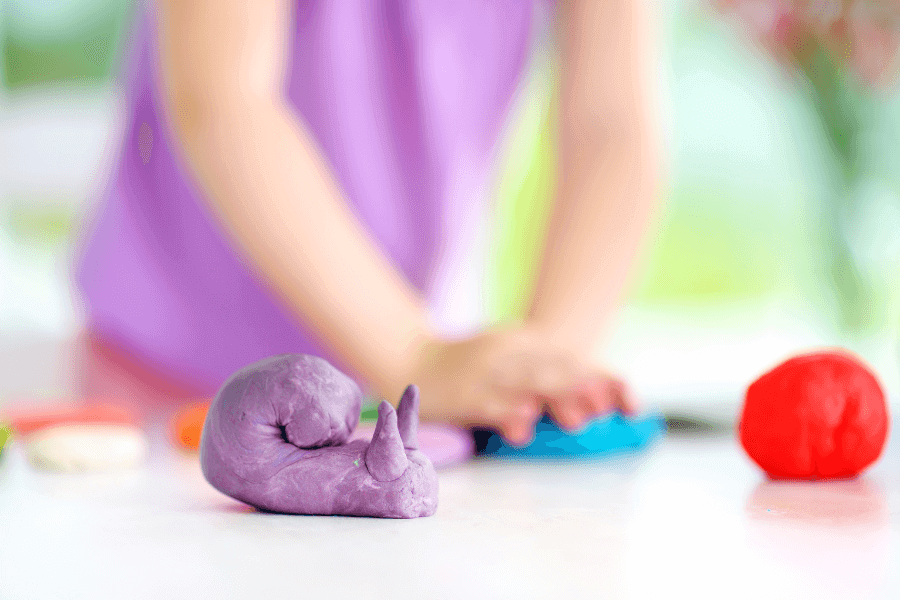
Your homemade playdough may also become extremely dry and brittle due to various issues like:
1. No Cream of Tartar Makes Your Playdough Dry
Cream of tartar is a vital element while making homemade playdough. It is the main ingredient for flexibility and softness. So, if you do not use it, there are chances that your playdough may end up dry and crumbly.
Solution: Use cream of tartar while preparing the dough. If you do not have it, you can substitute it with lemon juice or vinegar.
2. Too Much Flour Can Make Your Playdough Brittle
Less flour can make your playdough sticky, and too much flour can make it dry. As there will be less moisture, your dough won’t have the softness it should. So, you must put in the perfect amount of flour.
Solution: Adding more water and oil to the flour can help you get back a proper and smooth consistency.
3. Storing Your Playdough For a Long Time Can Make It Dry
Although you can store your playdough, keeping it for an extended amount of time can make it brittle and crumbly. This is because of the loss of moisture over time. However, you can make it moist again.
Solution: After removing it from storage, you can add water to the playdough and knead it properly to get the soft playdough again.
Playdough helps bring out the creativity in kids. It presents kids with unlimited opportunities to display their skills. Your kids can mold it into any shape, and use any color they like. Additionally, it is an excellent activity for adults.
Making playdough is also an enjoyable process. The ingredients are readily available, the dough-making process is easy too, and lastly, you need not spend extra bucks to get ready-made dough from toy shops. In the end, you get a bucket of play dough and memories that will last forever!
Getting the Perfect Playdough Texture
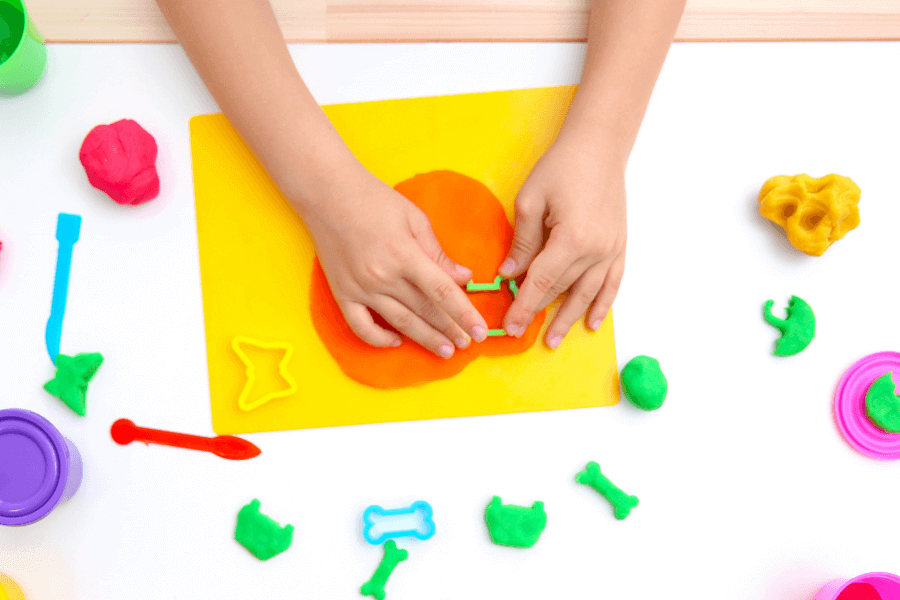
To get the perfect playdough, you need proper ingredients along with their exact measurements.
So here’s the science. Every ingredient has its role to play. Each of them contributes something to get the soft and smooth texture of the playdough.
To get the softest Homemade playdough you need five main ingredients (complete Playdough recipe here)
- Water
- Flour
- cream of tartar
- salt
- oil.
Note that there are many other ingredients you can use, like food coloring, essential oil, etc. However, the above five ingredients form the base of your playdough.
Flour and Water: Let’s talk about flour and water. As the flour contains protein, it binds with the water and becomes a bulky mass. This mass serves as the stretchy and flexible base of your playdough.
Salt: The next important ingredient is salt. Salt acts as an essential preservative to keep your playdough fresh for days. Salt usually prevents microbial activity in your playdough and keeps it from becoming stale and unusable. It also provides proper texture to your dough.
Cream of Tartar: The cream of tartar is one of the deciding factors in the final output of your clay. Its use and measurement make the most difference. Cream of tartar is the key ingredient for the softness and flexibility of your homemade playdough.
Related: No cream of tartar in hand? Use these ingredients instead
If you don’t use the cream of tartar, your playdough will turn out extremely dry and crumbly. Adding too much cream of tartar can also result in adverse health effects if your child happens to ingest it.
Oil: Oil helps in getting a smooth texture and also acts as a lubricant. Oil has unique preservative properties too that can help your playdough remain fresh longer.
Other than these, you can use food coloring to add vivid colors to your playdough. A few drops of essential oil can also help in getting a lovely fragrance. You can check out playdough recipes here.
However, you might face some issues if your playdough turns out to be too sticky or too dry. Well, we have answers for that as well.
By following these solutions, you can get homemade playdough less sticky or less dry!
Conclusion
Playing with homemade playdough is a fun activity for you and your kids too. It is cost-effective and durable, and you can have your kind of dough – be it sparkly or glittery.
